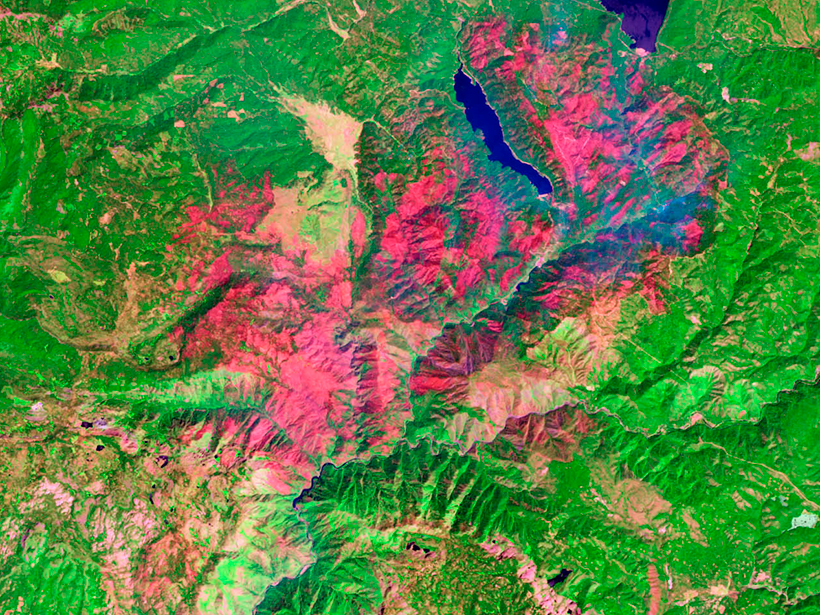Source: Journal of Geophysical Research: Biogeosciences
The 2012 wildfire season in the United States was record-breaking, burning an area equivalent to the entire state of Maryland, Washington, D. C., and most of Delaware, and in the coming century, fire activity is expected to increase in California and other western states. In the face of this incendiary trend, a better understanding of the interaction between wildfires and the carbon cycle is vital.
Wildfires release huge volumes of carbon into the air as carbon dioxide, but the blackened landscapes the fires leave behind are filled with pyrogenic carbon, organic materials that are charred but not fully destroyed by the fire. Pyrogenic carbon is an important part of the carbon cycle because it is supposedly more stable than other forms of carbon. It remains in its charred form rather than breaking down and continuing through the carbon cycle and eventually back into the atmosphere as carbon dioxide.
In this study, Maestrini et al. quantify pyrogenic carbon in the wake of California’s record-breaking 2012 Chips wildfire, 2 to 3 years after the burn finished. By this time, initial erosion and loss of pyrogenic carbon should already have happened, and whatever pyrogenic carbon that they found in the area should be there long term.
To get the fullest picture of the forest’s carbon profile, researchers examined different parts of the scorched forest, from blackened trees that stood upright, to chunks of logs lying on the forest floor, all the way down to the mineral soil. The researchers also considered the severity of the fire, which is measured by the amount of damage done to the forest.
The team found that areas that experienced high-severity fire built up a high pyrogenic carbon stock in standing trees and in large debris on the forest floor. Areas that burned at a low to moderate severity, on the other hand, resulted in more pyrogenic carbon in forest floor debris. Because pyrogenic carbon on the forest floor tends to erode or leach away, aboveground carbon stores may hold the carbon in the area longer.
California will continue to be vulnerable to intense wildfires in part because of its changing climate and in part because human efforts to prevent natural fires have led to a buildup of flammable materials that allow fires that do break out to burn hotter and longer. A season of wildfires can already release as much carbon dioxide into the atmosphere as the annual vehicle emissions of entire states. This research illuminates how fires fit into the carbon cycle, a key piece in understanding how these blazes will affect the problems we already face with carbon. (Journal of Geophysical Research: Biogeosciences, https://doi.org/10.1002/2017JG003832, 2017)
—Elizabeth Thompson, Freelance Writer
Citation:
Thompson, E. (2017), Following carbon in an age of fire, Eos, 98, https://doi.org/10.1029/2017EO080981. Published on 11 September 2017.
Text © 2017. The authors. CC BY-NC-ND 3.0
Except where otherwise noted, images are subject to copyright. Any reuse without express permission from the copyright owner is prohibited.

